Keeping memory alive, one heritage building at a time
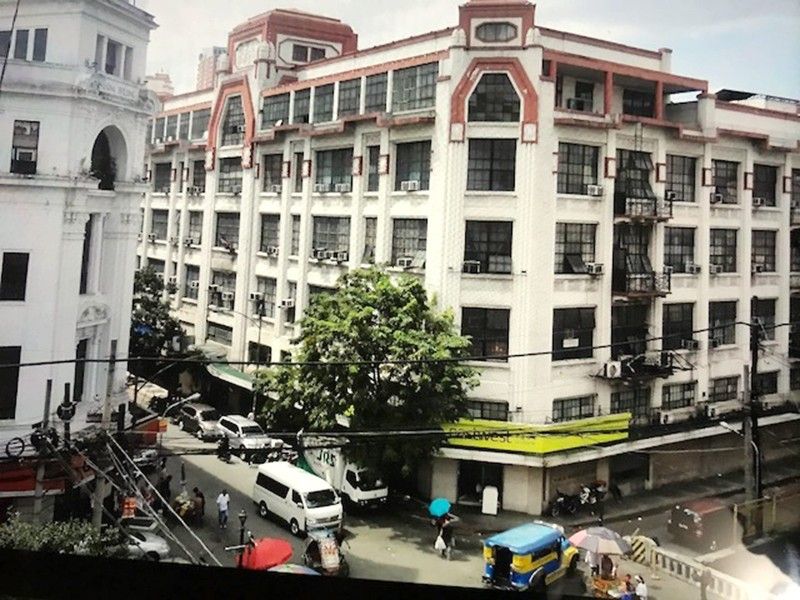
‘The past is a way for the future to become more beautiful,’ says building owner Robert Sylianteng. It is but fitting that Danny Dolor’s photo exhibit of movie ads, leaping out of the pages of Philippine cinema’s first golden years (1936-1941) and titled ‘Alitaptap Kikilapkilap,’ is held at the historic Perez-Samanillo Building.
Imagine a picture-pretty Escolta of the 1920s -- well-bred, well-dressed ladies sauntering along cobblestone streets, ornate wooden buildings gracing the skyline, and an elegant city humming with activity. Back then, Escolta was the heart of the country’s commercial and business center.
Standing out amid the bustling cityscape was the stately Perez-Samanillo Building built by Luis Perez Samanillo in 1928, based on the architectural design by Andres Luna de San Pedro, son of the great painter/political activist Juan Luna. Named as the most beautiful office building by the city government of Manila, it was home to some of the exclusive businesses of this gentle and genteel age.
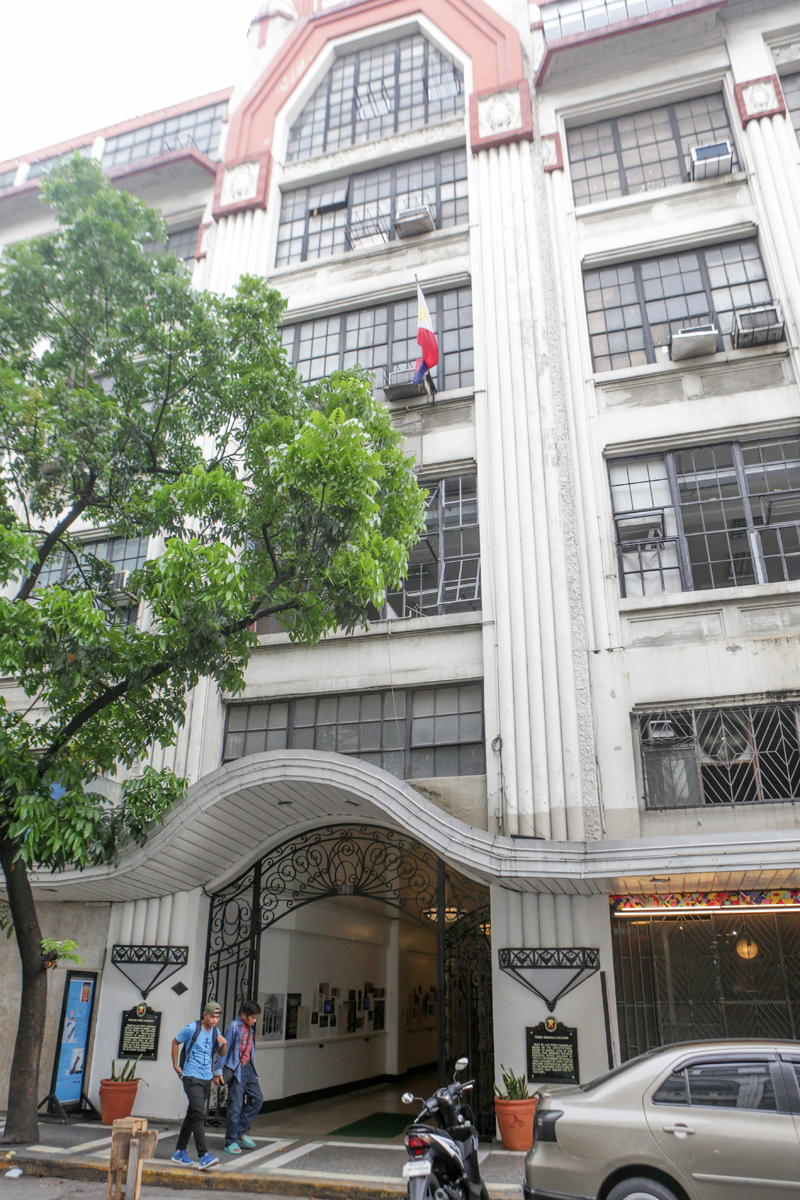
Who, what, wear
Moving into the new Perez-Samanillo Building in February 1928 was the Erlanger and Galinger, and Hale Shoe Company (according to the American Chamber of Commerce Journal). No business like shoe business on Escolta, where the well-heeled from near and far went to shop and certainly found their solemates. Soon came Riu Hermanos, a leather goods store selling quality genuine leather wallets, bags, belts, buckles, boots, saddles fashioned by the fine craftsmen of Bulacan, as well as leggings for the Army and air guns. According to Tom Morato III, his mother and aunt once told him that Teodoro Toribio, future owner of Ang Tibay (that sturdy, trusted pair of shoes that some of us remember wearing to school), later put up his own business here, too.
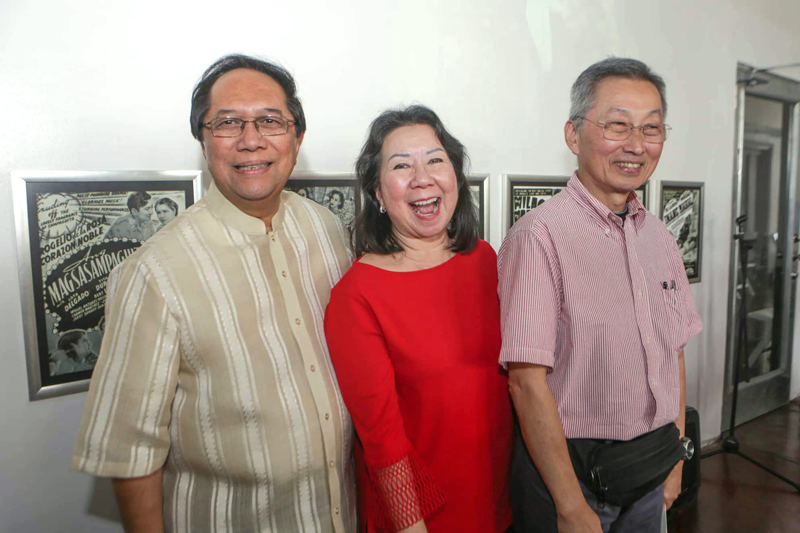
Old movies never die, they just fade away: Art patron/nationalist Danny Dolor, building owners Lorraine and Robert Sylianteng open Danny Dolor’s photo exhibit of movie ads from the first golden years of Philippine cinema (1936-1941) at the First United Building on Escolta.
An account on the building by IV Mallari, published in Philippine Magazine in October 1930, gives this historical footnote: “Certainly our most pretentious structures are consecrated neither to religion nor to culture but to business, our new god. One of the most successful of these structures is the Luis Perez Samanillo Building on the Escolta, built by Luna de San Pedro, designed in a style so prevalent in Europe, particularly Germany, Denmark, and the Scandinavian countries. It is the forerunner of the many modern and pseudo-modern structures now rising in our business district.”
Circa 1933, the consulates of Panama and France set up their offices in this building, specifically at Rooms 217 and 329 respectively.
In 1936, Berg’s Department Store opened at the ground floor of the Perez-Samanillo Building. It was the shopaholic’s haven for imported items. Like US-made household items such as an egg beater at P1.65, a table lamp at P2.50, an ice bucket with tong at P8.95; a yard of ramie towel at P0.79, ladies’ sandals at P10.90, men’s moccasins at P13.90, boys’ briefs at P0.19, overalls at P1.48, jeans at P6.75.
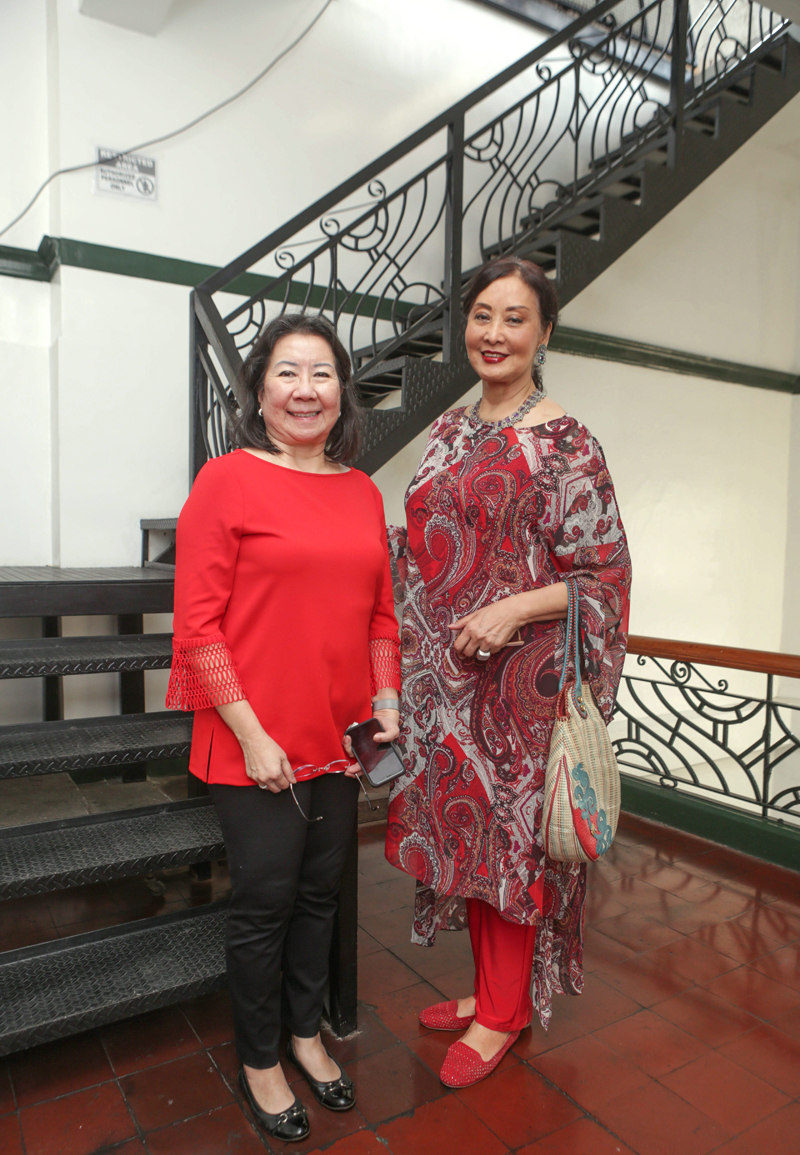
Stairway to history: Lorraine Sylianteng and beauty queen/heritage conservationist Gemma Cruz-Araneta show off the ornate staircase at the Perez-Samanillo Building built in the 1920s.
Fast forward to 1945: The atrocities of war left Manila in shambles and the battle for its liberation was raging. Among other landmarks on Escolta, the Perez-Samanillo Building suffered severe damages.
As the smoke cleared, the reconstruction of the building began.
Over the past 50 years, the Escolta underwent many face lifts, like the cobbled stone streets were paved with concrete and the sidewalks tiled. In place of the wooden buildings there rose multi-storied edifices.
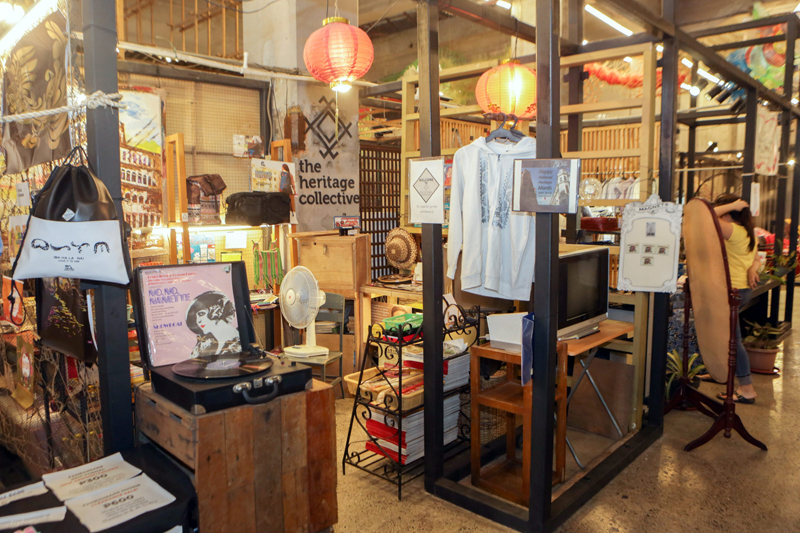
Clothes with a story: Even the fashion shops here have statements to make.
Memories for sale
Circa 1964, the Perez-Samanillo Building went on sale. In 1968, it was acquired by the First United Building Corporation. In 1979, the Syliantengs bought majority of the shares of the First United Building.
Lorraine Young-Sylianteng relates, “We didn’t open it until 1979, but sales at Berg’s were deteriorating and it was only surviving because of the PNB employees and visitors’ patronage.” (Lorraine married Robert Sylianteng, whose family now owns the building, in 1978.)+
Lorraine recalls that Escolta, then the address of distinction, drew the patronage of showbiz people and business was brisk at the First United Building. She adds, “Mrs. Glecy Tantoco of Rustan’s was our supplier.”
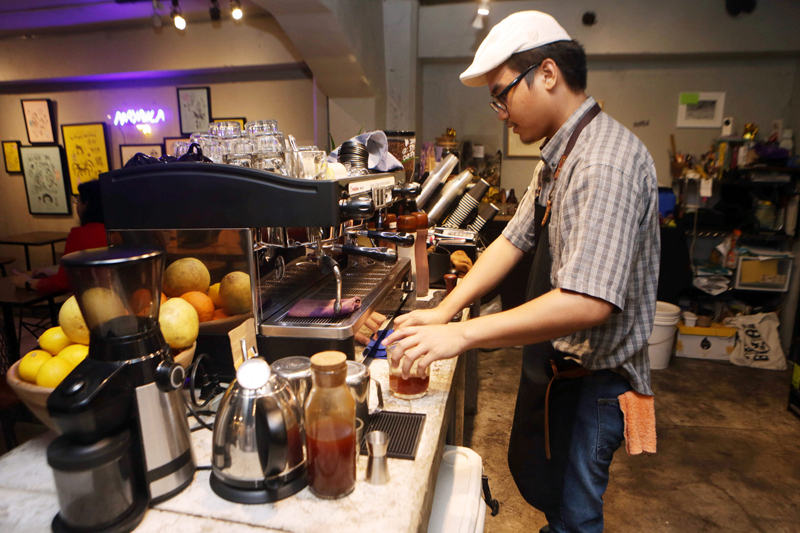
Something’s brewing: At The Den, you can have coffee, tea, or political satire by visual artist Auggie Fontanilla now exhibiting “Doon sa Maynila.”
Art patron/nationalist Danny Dolor only has fond memories of the old Escolta. “Escolta is very close to my heart because it was here where we had our botika Dolor’s Pharmacy, during the 1950s-’60s, on the ground floor of the Calvo Building.
It is but fitting that Danny Dolor’s photo exhibit of movie ads, leaping out of the pages of Philippine cinema’s first golden years (1936-1941) and titled “Alitaptap Kikilapkilap,” is held at the historic Perez-Samanillo Building (now the First United Building). Dolor is doubly nostalgic as the exhibit also pays tribute to the 25th anniversary of his “Remember When” column in The Philippine STAR, 100 years of Philippine cinema, and National Heritage Month this year.
The exhibit, says Dolor, is his “way of sharing the joy of collecting but more importantly, a reminder to everyone involved in the movie industry, especially to superstars and megastars, that life is short and transitory.”
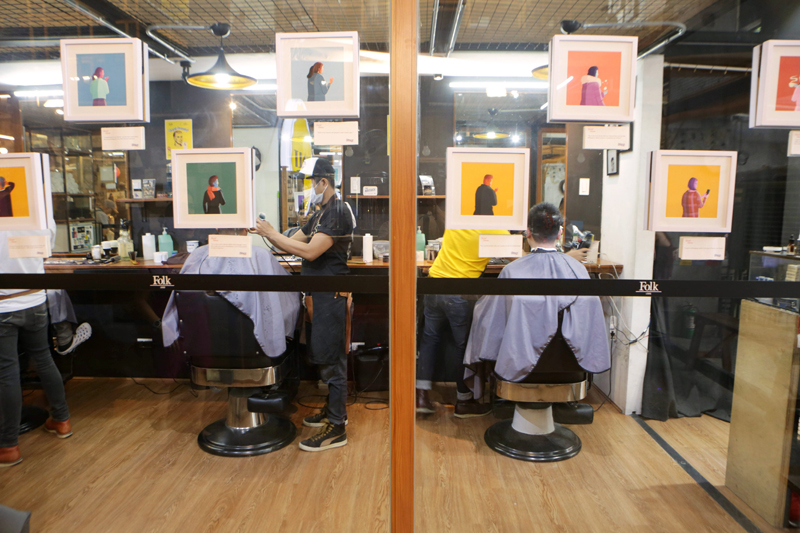
A cut above the rest: Folk barbershop enjoys a good patronage.
If only these walls could speak, they would surely tell many an intriguing tale of these rooms’ former occupants. There was King of Comedy Rodolfo “Dolphy” V. Quizon whose laughter must have filled Room 514 where his RVQ Productions held office in 1974-2012. This room is now full of art and architectural stuff as it has been transformed into the office of One Zero Architecture Studio, with young architect Arts Serrano enjoying a view of the Sta. Cruz Church from his window.
Movie fans can really go stargazing in this old building. In 1973 to 1985, superstar Nora Aunor, recording artist and film producer, held office at Rooms 502 and 506 under her NV (Nora Villamor) Productions. GC Films, under Rolando and Gabby Concepcion, occupied Room 308 in 1982-1984. On that floor, too, was Danny Zialcita’s Essex Films which occupied various rooms.
Art attack
For some artwarming retail therapy, there’s the Hub: Make Lab on the ground floor. “These are artist-run businesses,” says Lorraine. “We want to invite creative people, artists to set up shops here, to hold exhibits or to organize bazaars. I expect the yuppies to come here. This place will be full of young people.”
We meet Seb de Jesus of 1372 Shop. He and his daughters do sketches on notebooks, like one that has a sketch of the old Escolta. Very pretty! They have small artworks that are priced below P300. Very affordable art to brighten up a nondescript corner in your home.
Oh yes, you can shop for clothes here, too. But even the clothes here have their own stories to tell. “Ano Ang Kwento ng Damit Ko?” is a fashion installation by Re Clothing who makes this statement: “With media and fast fashion industry removing our connection to the makers of our clothes, it gets easier and easier to simply throw them after a few uses. Re Clothing wants to change this state of mind by bringing back the culture of building connections with revamped secondhand clothing.”

Art and soul: First United Building Corporation invites creative people, artists to set up shops here, like Seb de Jesus’ 1372.
On this floor, too, is the Folk barbershop, which must be a cut above the rest, judging from the waiting customers way past 5 p.m.
But of course, there’s a coffee shop -- and even a bar -- in this building. The Den Coffee and Contemporary Culture has a limited offer of its Manila Sunset, an espresso shot of Philippine specialty coffee mixed with orange syrup blend plus a fizz of soda water with orange cinnamon caramel brittle. Aside from satisfying your caffeine fix, The Den dishes up handmade pasta bowls, too. Care for Gourmet Tinapa Aglio Olio Pasta sautéed in smoked fish sauce or Adobo Rice Bowl with hard-boiled egg and a bulb of roasted garlic?
Added attraction at The Den: “Doon Sa Maynila,” an exhibit of street art and tattoo-inspired art by visual artist Auggie Fontanilla who comments on Manila’s social and political landscapes, May 4-June 30.

Dolphy left the building: Arts Serrano’s One Zero Architecture Studio now occupies what used to be the office of Dolphy’s RVQ Productions.
“One of the biggest problems is what they call gentrification, which happens everywhere,” remarks building owner Robert Sylianteng. “The artists get involved, prices go up, they cannot afford anymore. We’re trying to overcome that by inculcating the lessons of enterprise and business-mindedness without losing one’s heart for art, for goodness, for whatever ideals you may want. So, this is a long-term journey that we thought we could embark on with the help of everyone concerned... I started working as a volunteer in my father’s business, we didn’t get paid. This space is 90 years old; maybe we can assemble a group of people, movie producers or movie fans, and have some kind of conversation. Ang nakaraan at paraan para mas gumanda ang kinabukasan (The past is a way for the future to become more beautiful). Let’s help keep our heritage structures alive. It’s incumbent upon each and every citizen to be part of patronizing old spaces. If only everyone would spend P1 a day in every old space -- like buy coffee or ice cream, or volunteer, help clean up -- by sheer number, that space would live because of the patronage. The reason why an earning space dies is because it has lost patronage. But if an old space can be patronized, even a decrepit coffee shop or sari-sari store, people will start wondering: Why are there so many people in this old place? Let’s do it one person at a time, one building at a time, one block at a time.”
And First United Building Corporation is taking the lead in helping rebuild Escolta’s glorious past, one memory at a time.















